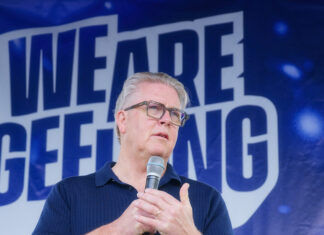KIM WATERS
A GEELONG hospital has implanted artificial shoulder joins in a world medical “revolution”, according to an orthopaedic surgeon.
Associate Professor Richard Page said he performed the world’s first PyroCarbon shoulder implant surgery on an arthritic 57-year-old patient at St John of God Hospital.
Mr Page said two more patients would receive similar implants at St John of God in the next few months.
Surgeons had previously used PyroCarbon implants only for smaller joints like fingers or hands, he said.
Mr Page described the use of PyroCarbon technology in shoulder implants as “revolutionary”.
“There are only six centres in the world using this material and fortunately we’re one of them.
“We’ve developed a trial with a carefully selected group and will monitor the outcomes for a minimum of 10 years. The monitoring and follow up is strict so that we can be confident this works in the long term.”
Mr Page said the world-first surgery had demonstrated faster recovery times and lower reported pain levels compared to traditional shoulder joint replacement surgeries.
“Certainly in terms of early movement it’s been very promising,” he said.
“I think it has the potential to be a minor revolution in terms of shoulder joint replacements. We’re hoping it’s a definite step forward.”
Mr Page said the PyroCarbon product was originally used to coat nuclear fuel rods.
Researchers in America developed the material for joint replacements.
PyroCarbon joints offered a smoother surface and were softer than metal, Mr Page said.
The implant was only suitable for arthritis suffers.
“I think in a minor way it’s going to put Geelong on the map,” Mr Page said.
“Geelong is really not just in the front half of the pack but at the front end of that pack in leading medical technologies.
“We’ll continue our recruiting process looking for appropriate patients with an ongoing trial and follow-up process.”
Get the latest news to your email inbox FREE!
REGISTER






